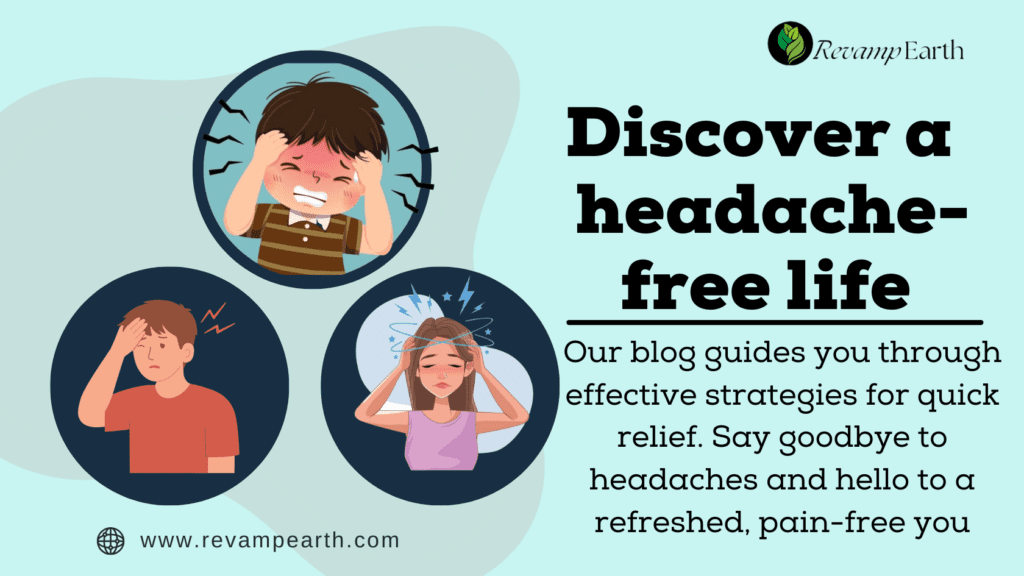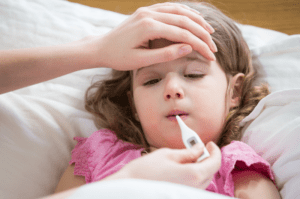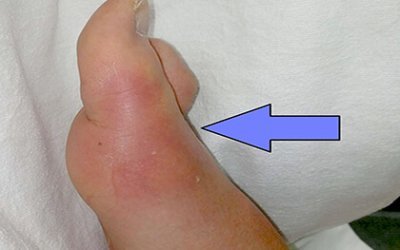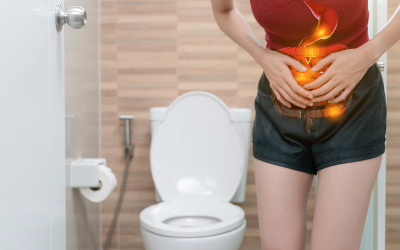Natural Remedies for Headaches: How to Find Relief ?

In the hustle and bustle of modern life, headaches have become an unwelcome companion for many. Let’s delve into the multifaceted world of headaches, exploring not only the common causes and age groups affected but also unveiling practical home remedies and lifestyle adjustments to keep those pounding headaches at bay.
Headaches can be as diverse as the people who experience them. From tension headaches fueled by stress and muscle tension to migraines triggered by various factors, it’s crucial to identify the root cause. Understanding the different types empowers individuals to adopt targeted strategies for relief.
Headaches don’t discriminate based on age, but certain life stages bring unique challenges. From stress-packed school years to the pressure-cooker environment of the corporate world, understanding age-specific triggers helps tailor preventive measures. Parents, students, and professionals alike can benefit from targeted strategies.
Types of Headaches
Tension Headache:
- Description: Dull, aching pain on both sides of the head, often described as a tight band around the head.
- Causes: Stress, muscle tension, poor posture, dehydration, or eye strain.
- Management: Over-the-counter pain relievers (e.g., ibuprofen, acetaminophen), relaxation techniques (e.g., meditation, yoga), and addressing triggers such as stress or posture.
Migraine:
- Description: Intense, throbbing pain on one side of the head, often accompanied by nausea, vomiting, and sensitivity to light and sound.
- Causes: Triggers may include hormonal changes, certain foods, stress, sleep disturbances, and sensory stimuli.
- Management: Prescription medications (e.g., triptans, ergotamines), preventive medications (e.g., beta-blockers, antidepressants), avoiding known triggers, and lifestyle changes (e.g., regular sleep patterns, balanced diet).
Cluster Headache:
- Description: Severe pain on one side of the head, often around the eye. Accompanied by tearing, nasal congestion, and eyelid drooping.
- Causes: The exact cause is unknown, but they may be related to abnormalities in the hypothalamus. They often occur in clusters at specific times of the year.
- Management: Oxygen therapy, prescription medications (e.g., triptans), and preventive treatments (e.g., verapamil).
Sinus Headache:
- Description: Pain and pressure in the forehead, cheeks, and bridge of the nose, often with sinus symptoms like congestion.
- Causes: Sinusitis or sinus infection.
- Management: Decongestants, saline nasal sprays, and treating the underlying sinus condition.
Rebound Headache:
- Description: Headaches that occur from overusing pain relievers. They worsen as medication wears off, creating a cycle of increased usage and continued headaches.
- Causes: Overuse of pain relief medication.
- Management: Gradually reducing medication use under medical supervision, and managing pain with alternative treatments such as physical therapy or stress reduction.
Cervicogenic Headache:
- Description: Pain that starts in the neck and radiates to the head, often on one side. It may also involve limited neck movement.
- Causes: Cervical spine issues, poor posture, or neck injuries.
- Management: Physical therapy, massage, and posture correction. In some cases, nerve blocks or injections may be recommended.
Hormonal Headache:
- Description: Headaches that occur due to hormonal fluctuations, often in women around menstruation, pregnancy, or menopause.
- Causes: Hormonal changes.
- Management: Hormonal treatments, pain relievers, and preventive medications.
Exertional Headache:
- Description: Headache triggered by intense physical activity such as running or lifting heavy weights.
- Causes: Unknown, but possibly due to changes in blood flow during exertion.
- Management: Warm-up before exercise, and rest and hydration after activity. If persistent, seek medical advice.
New Daily Persistent Headache (NDPH):
- Description: Chronic headache that begins suddenly and persists daily without relief.
- Causes: Unknown, but could be related to an infection, head injury, or other conditions.
- Management: Pain relievers, preventive medications, and lifestyle changes.
It’s essential to consult with a healthcare professional for an accurate diagnosis and personalized management plan tailored to your specific type of headache and individual health considerations.
Possible Causes of Headache:
Stress and Tension:
How it affects: Tightening of muscles, especially in the neck and shoulders, leading to tension headaches.
Prevention/Management: Stress management techniques such as meditation, deep breathing, and regular breaks. Know more about stress management
Dehydration:
How it affects: Lack of proper hydration can lead to reduced blood volume, affecting the brain’s blood flow and causing headaches.
Prevention/Management: Ensure adequate water intake throughout the day, especially in hot climates or during physical activities.
Lack of Sleep:
How it affects: Disruption in sleep patterns can trigger migraines or tension headaches.
Prevention/Management: Maintain a consistent sleep schedule and create a conducive sleep environment. Know about Insomnia.
Poor Posture:
How it affects: Incorrect alignment of the spine and neck can contribute to tension headaches.
Prevention/Management: Maintain good posture, especially during prolonged periods of sitting or screen time.
Screen Time and Eye Strain:
How it affects: Prolonged exposure to screens can strain the eyes and trigger headaches, known as digital eye strain.
Prevention/Management: Follow the 20-20-20 rule (every 20 minutes, look at something 20 feet away for at least 20 seconds) and ensure proper lighting.
Caffeine Withdrawal:
How it affects: Abruptly reducing caffeine intake can lead to headaches.
Prevention/Management: Gradually reduce caffeine consumption to avoid withdrawal symptoms.
Weather Changes:
How it affects: Barometric pressure changes, high humidity, or extreme temperatures can trigger migraines.
Prevention/Management: Stay hydrated, maintain a consistent sleep schedule, and consider lifestyle adjustments during extreme weather conditions.
Hormonal Fluctuations:
How it affects: Changes in estrogen levels, commonly experienced by women during menstruation, pregnancy, or menopause, can trigger migraines.
Prevention/Management: Hormonal therapy or lifestyle adjustments under medical guidance.
Environmental Factors:
How it affects: Strong odors, loud noises, or bright lights can act as triggers for certain individuals.
Prevention/Management: Identify and avoid specific environmental triggers when possible.
Dietary Factors:
How it affects: Certain foods, like processed meats, aged cheese, or artificial sweeteners, can trigger migraines in susceptible individuals.
Prevention/Management: Keep a food diary to identify potential triggers and consider dietary adjustments.

Management Strategies:
Managing headaches effectively involves a combination of lifestyle adjustments, targeted remedies, and, in some cases, medical intervention. Below are general guidelines for headache management:
Identify and Address Triggers:
Keep a headache diary to identify patterns and potential triggers.
Once triggers are identified, work on minimizing exposure to them.
Stay Hydrated:
Maintain regular and adequate hydration throughout the day.
Limit the consumption of dehydrating substances like alcohol and caffeine.
Adopt Healthy Sleep Habits:
Establish a consistent sleep schedule, ensuring 7-9 hours of quality sleep.
Create a comfortable sleep environment, minimizing disruptions.
Practice stress reduction techniques such as meditation, deep breathing, and mindfulness.
Incorporate regular breaks and relaxation into daily routines.
Correct Posture and Ergonomics:
Maintain good posture, especially during extended periods of sitting or computer use.
Use ergonomic furniture and tools to minimize strain on the neck and shoulders.
Eye Care:
Follow the 20-20-20 rule to reduce eye strain during screen time.
Ensure proper lighting in work and living spaces.
Regular Exercise:
Engage in regular physical activity to improve overall well-being.
Choose exercises that promote relaxation, such as yoga or swimming.
Healthy Diet:
Maintain a well-balanced diet, avoiding known trigger foods for some individuals.
Stay consistent with meal times and avoid skipping meals.
Consider Natural Remedies:
Explore natural remedies like aromatherapy with essential oils (lavender, peppermint), herbal teas, and acupressure.
Consult with a healthcare professional before trying new remedies, especially if you have underlying health conditions or are pregnant.
Over-the-Counter Medications:
Non-prescription pain relievers like acetaminophen, ibuprofen, or aspirin can provide relief for mild to moderate headaches.
Follow dosing instructions carefully and consult a healthcare professional if headaches persist.
Prescription Medications:
For severe or chronic headaches, a healthcare professional may prescribe specific medications, including migraine-specific drugs or preventive medications.
Follow medical advice closely and communicate any concerns or side effects.
Exploring Herbal Remedies
Drumsticks & black pepper: Extract the juice from the drumstick leaves and mix with the ground black pepper into a smooth paste. Apply on the forehead.
Henna leaves or seeds: Soak a handful of flowers or 2 teaspoons of crushed seeds in 3 cups of water for a few hours and wash the face with the infusion frequently.
Tamarind, henna, and dhatura: Grind 2 teaspoons each of the leaves of tamarind, henna, and dhatura along with 1 teaspoon salt into a very fine paste. Dilute with 1/2 teacup water. Boil it, when it becomes hot and paste-like in consistency apply as a plaster around the head. Tie a cotton napkin tightly on that paste, around the head before sleep.
Jasmine: Soak a handful of fresh Jasmine flowers in a small cup of water for at least one hour; add 1/4 teaspoon salt into this water and stir well to dissolve. Instill two to three drops in the nostrils twice or thrice daily as needed.
Jasmine oil extracted from jasmine flowers also can be applied to the forehead.
Haritaki (Terminalia chebula): Make a fine paste of the rind and apply on the forehead.
Castor leaves: Apply a poultice of leaves on the forehead.
Always remember that the effectiveness of herbal remedies can vary, and individual responses may differ. It’s crucial to consult with your healthcare provider before trying any herbal supplements, especially if you are taking medications or have pre-existing health conditions. Additionally, herbal remedies should be used as part of a comprehensive treatment plan that includes proper medical care, lifestyle modifications, and medication adherence.
References
Marco A. Pescador Ruschel; Orlando De Jesus. (2023). Migraine Headache. National Library of Medicine. View
Paul Rizzoli, MD, FAHS, William J. Mullally, MD, FAH (2017). Headache. The American Journal Of Medicine. View
- H.K.Bakhru (1992) Herbs That Heal: Natural Remedies for Good Health. Orient Paperbacks. Delhi, India.
- T.V.Sairam (1999) Home Remedies Vol-II: A Handbook of Herbal Cures for Common Ailments. Penguin Books India.
Dos
Stay Hydrated:
Do: Drink an adequate amount of water throughout the day to maintain proper hydration.
Establish a Regular Sleep Schedule:
Do: Aim for 7-9 hours of quality sleep each night and maintain a consistent sleep schedule.
Identify and Manage Stress:
Do: Practice stress-reducing techniques such as meditation, deep breathing, and mindfulness.
Maintain Good Posture:
Do: Be mindful of your posture, especially during prolonged periods of sitting on the computer.
Follow the 20-20-20 Rule:
Do: Take breaks during screen time by looking at something 20 feet away for at least 20 seconds every 20 minutes.
Incorporate Regular Exercise:
Do: Engage in regular physical activity to promote overall well-being.
Adopt a Well-Balanced Diet:
Do: Maintain a healthy diet, including regular meals and avoiding known trigger foods.
Consider Natural Remedies:
Do: Explore natural remedies like aromatherapy, herbal teas, and acupressure under the guidance of a healthcare professional.
Keep a Headache Diary:
Do: Track your headaches, including triggers, frequency, and severity, to identify patterns.
Seek Professional Guidance:
Do: Consult with a healthcare professional for personalized advice and treatment options.
Don’ts
Ignore Regular Sleep Patterns:
Don’t: Sacrifice sleep or have irregular sleep patterns consistently.
Overuse Pain Medications:
Don’t: Rely on over-the-counter pain medications excessively, as it can lead to rebound headaches.
Skip Meals:
Don’t: Skip meals or follow irregular eating patterns.
Neglect Stress Management:
Don’t: Ignore stress-reduction techniques; chronic stress can contribute to headaches.
Maintain Poor Posture:
Don’t: Slouch or maintain poor posture, especially during desk work or screen time.
Consume Excessive Caffeine or Alcohol:
Don’t: Overindulge in caffeine or alcohol, as both can contribute to headaches.
Disregard Environmental Triggers:
Don’t: Ignore environmental factors such as bright lights, loud noises, or strong odors if they trigger headaches.
Delay Professional Consultation:
Don’t: Hesitate to seek professional help if headaches persist or worsen.
Overlook Hormonal Factors:
Don’t: Disregard the impact of hormonal fluctuations, especially for women, in headache management.
Avoid Regular Eye Checkups:
Don’t: Neglect regular eye checkups, especially if you spend extended periods in front of screens.
Send Us A Message
FAQs
- There are several types of headaches, including tension headaches, which are the most common and often feel like a tight band around the head; migraine headaches, which can cause severe, throbbing pain often accompanied by nausea and sensitivity to light and sound; and cluster headaches, which are rare but very painful, occurring in cycles or clusters.
- Headaches can be caused by various factors such as stress, poor posture, lack of sleep, dehydration, eye strain, and certain foods or drinks. In some cases, headaches may be triggered by underlying health conditions, such as high blood pressure, sinus issues, or neurological disorders.
- Preventing headaches involves maintaining a healthy lifestyle: stay hydrated, get enough sleep, manage stress, and avoid known triggers such as certain foods, alcohol, or caffeine. Regular exercise and proper posture can also help reduce the likelihood of headaches.
- Effective natural treatments for headaches include staying hydrated and using herbal remedies like feverfew and butterbur. Applying essential oils such as peppermint or lavender to the temples or inhaling their aroma can provide relief. Acupressure on specific points, relaxation techniques such as yoga and meditation, and using cold or warm compresses on the forehead or back of the neck may also help alleviate headache symptoms. Always consult a healthcare professional before trying new natural treatments.














